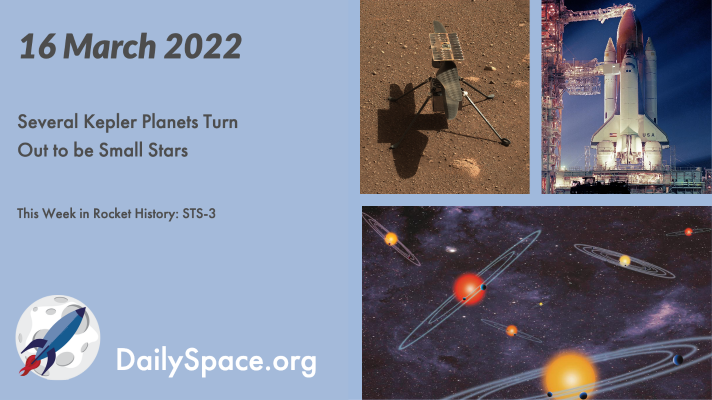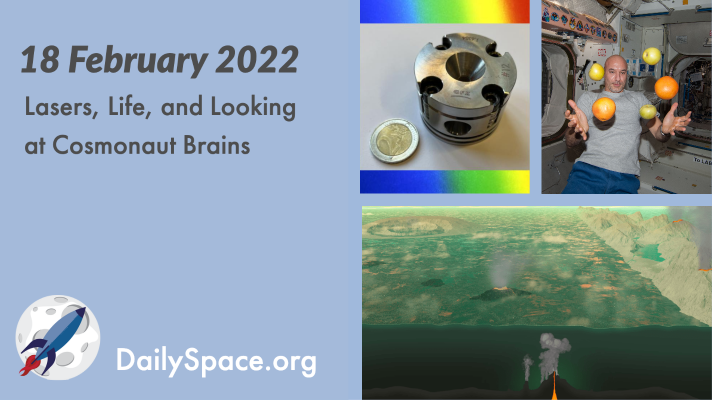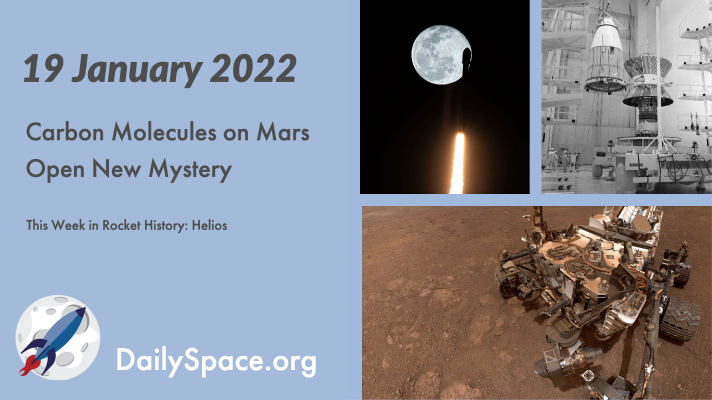
Mar 17, 2022 | Astrobiology, Climate Change, Crewed Space, Daily Space, Earth, Exoplanets, Kepler, Mars, Random Space Fact, Rockets, Soyuz, Space History, Spacecraft, Stars
Using updated stellar measurements based on new data from the Gaia mission, three (and possibly four) Kepler exoplanets are actually small stars, but it’s unlikely new calculations will reveal many more such issues. Plus, Ingenuity, astronauts, permafrost, and This Week in Rocket History, we look back at STS-3 and the first use of the Canadarm.

Feb 21, 2022 | Astrobiology, Crewed Space, Daily Space, Earth, ESA, Exoplanets, Mars, ROSCOSMOS, Spacecraft, The Sun
Do you want lasers? I want lasers! And today’s show features lots of lasers. We also have more questions than answers about Mars’ methane, misbehaving stars, and new research on how we would look for the early signs of life on other worlds. Plus, a study on how spaceflight impacts the human brain.

Feb 5, 2022 | Astrobiology, Crewed Space, Daily Space, Exoplanets, Moon, Rockets, Sky Watching, Spacecraft, SpaceX, Starlink, Stars, Supermassive Black Holes, Uranus
New simulations find that to form a moon with a similar size ratio to our own system, certain types of planets are needed. And that type of moon-planet system could then be beneficial to the rise of life on the planet. Plus, a Starlink launch, puffy planets, and training astronauts underwater for spacewalks.

Jan 29, 2022 | Asteroids, Astrobiology, Climate Change, Crewed Space, Daily Space, Earth, Exoplanets, Mars, Physics, Science
A research team studying the Poás volcano in Costa Rica, a potential analog for early Mars conditions, finds microbes surviving in extremely harsh conditions. Plus, table-top matter-antimatter experiments, an exoplanet’s complex atmosphere, and how snails and squirrels can help us understand space.

Jan 27, 2022 | Astrobiology, Crewed Space, Daily Space, Earth, Milky Way, Physics, Rockets, Space China, Space History, Spacecraft
For decades, scientists have been trying to work out just how the Earth got all its water, and the prevailing theory was that comets and asteroids brought it, and we have evidence for that mechanic; however, a new hypothesis has provided evidence that the water was already here, locked away in hydrous minerals in a very iron-poor core. Plus, magnetic fields, subatomic particles, life on the ocean floor, a geology mystery solved, and this week in rocket history covers a space shuttle mission with some really neat science.

Jan 20, 2022 | Astrobiology, Cosmology, Curiosity, Daily Space, Mars, Neutron Stars / Pulsars, Rockets, Space History, Spacecraft, SpaceX, Starlink, Stars, Supermassive Black Holes, White Dwarfs
NASA’s Curiosity rover has discovered carbon isotopes on Mars which are usually caused by the degradation of biological methane, leading scientists to examine other potential reasons for the molecules. Plus, more Starlink satellites, their impact on observing, and This Week in Rocket History.








 We record most shows live, on Twitch. Follow us today to get alerts when we go live.
We record most shows live, on Twitch. Follow us today to get alerts when we go live.